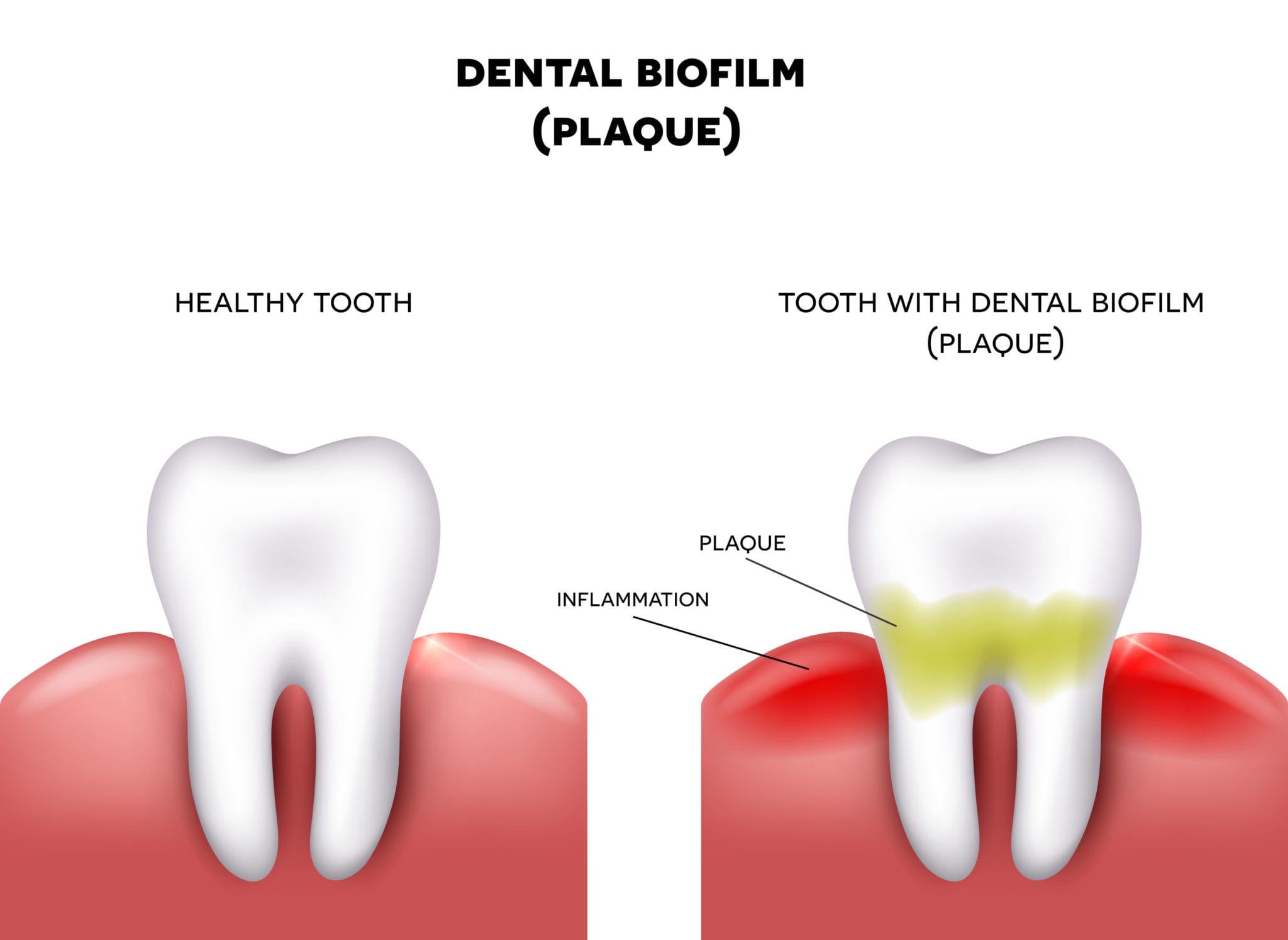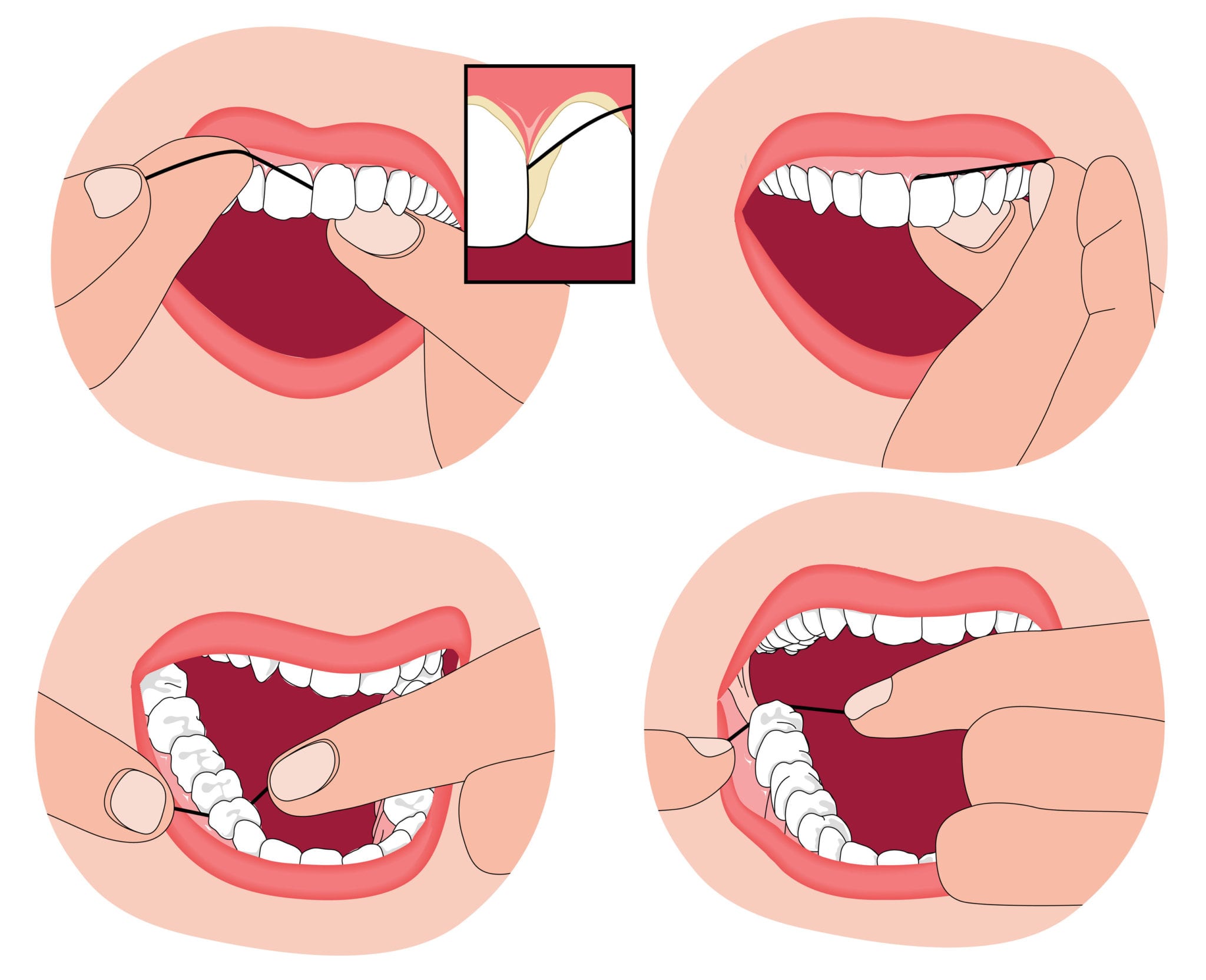
You have probably heard the word “plaque” a few times at dental check-ups over the years. It is a dental hygiene problem all people encounter, and over time, it can have a serious impact on your oral health.
Here we will look at what plaque is, where it comes from, and, most importantly, how to stop it.
Common Questions and Answers about Plaque
What is plaque, and what is it made of?
Plaque is a film or scum that develops on the teeth, usually next to the gums. You have probably seen it when you floss your teeth. It is the small, whitish chunks that are left on your floss.
Everyone’s mouth contains a lot of bacteria. Some kinds of bacteria are even beneficial, so getting rid of all the bacteria in your mouth would actually be harmful. However, some of the bacteria in your mouth, together with mucus and food particles, form plaque.
What is the difference between plaque and tartar?
Plaque forms within a few days and can be easily removed by brushing and flossing. However, when plaque is not removed, it calcifies and forms tartar.
This occurs due to the accumulation of minerals from saliva on plaque. Once tartar formation has begun, it creates a rough surface that promotes further accumulation of plaque, perpetuating a vicious cycle.
Tartar can only be removed by professional dental cleaning. You can prevent the formation of tartar in the first place with good at-home dental hygiene, but you should also have your teeth cleaned twice a year to remove any that has built up.
How can plaque affect my oral health?
Plaque and tartar are unsightly and cause embarrassing bad breath. More importantly, plaque and tartar are detrimental to your dental health. They are at the root of gum disease and tooth decay.
Bacteria contained in plaque and tartar promote tooth decay, otherwise known as dental caries. This leads to cavities and, if left untreated, the loss of your teeth. Plaque and tartar also cause inflammation in the gums, which can cause gums to further recede, exacerbating periodontal disease.
What can I do to get rid of plaque?
At-home dental hygiene and good dietary practices should be considered your first line of defense against plaque and tartar buildup.
Sugar promotes bacterial growth, so eating a low-sugar diet and brushing your teeth right after eating high-sugar foods can be beneficial. Sugary drinks are particularly detrimental to oral health, so if you are going to indulge, it is best to consume these drinks through a straw and brush your teeth when you’re done. Also, if you chew gum, be sure to select sugar-free varieties.
Be sure to brush and floss your teeth at least twice per day, in the morning and before bed at night. Brushing after lunch or after eating sugary snacks can also help to boost your dental hygiene.
Use a good toothpaste, and brush for at least two solid minutes in gentle, circular motions. A good electric toothbrush can boost your cleaning power and help you to brush for an adequate amount of time.

When flossing, gently guide the floss between your teeth using a rubbing motion. Never snap floss into place as this can damage the gums. Curve the floss in a C-shape against the base of each tooth, and gently work it up and down a few times on each tooth. Use a clean section of floss for each tooth.
If you follow these best practices and visit the dentist twice a year, you can keep this oral health problem at bay.






